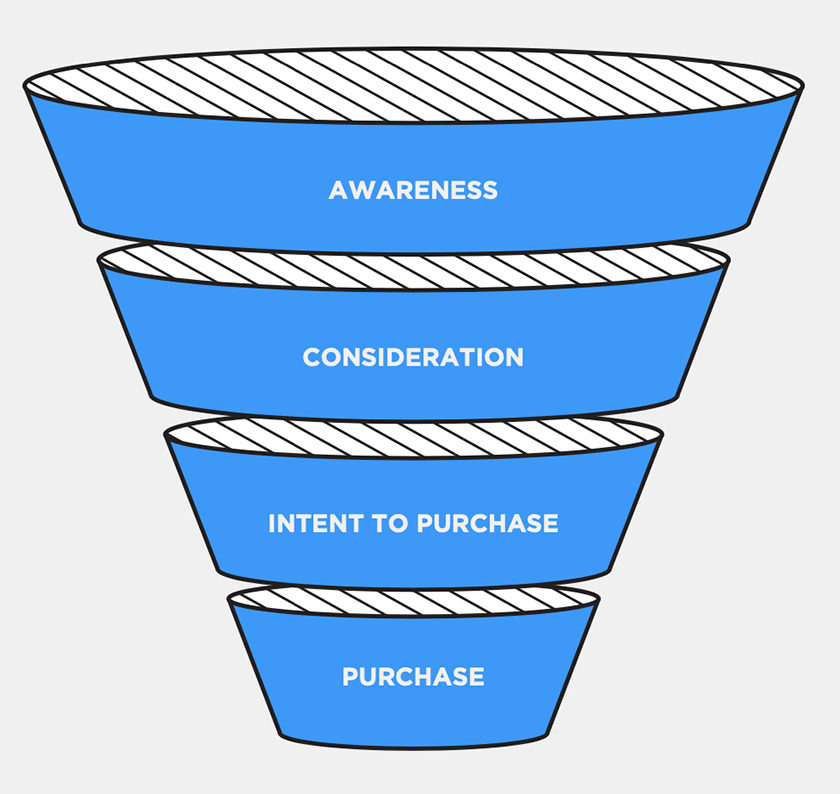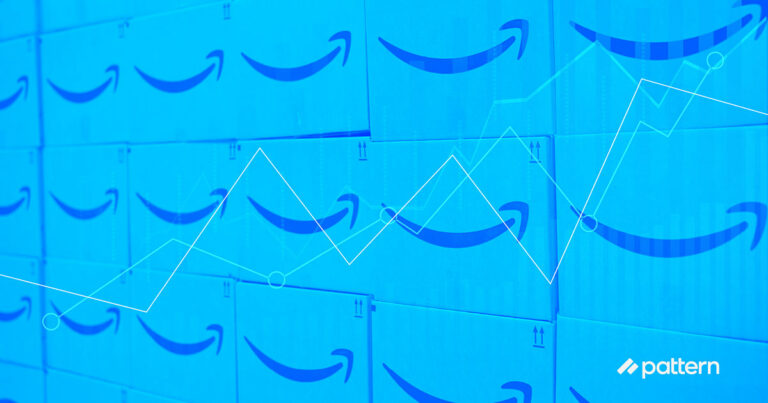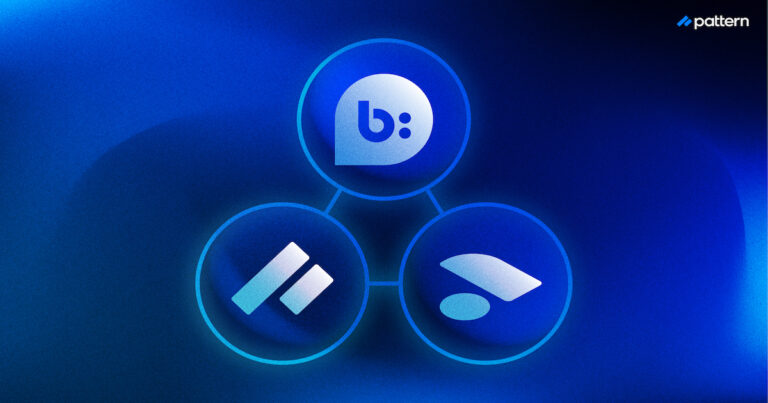Advertising is a simple way to grow your brand and increase your sales. But don’t get me wrong, developing your advertising strategy around growth can be hair-pulling difficult. It can take a lot of time to build and implement not to mention what you need in order to measure and report it.
That’s where Key Performance Indicators (KPIs) come into play. KPIs are trackable, quantifiable measurements that tell the story of, you guessed it, a brand’s performance over time. What you choose to measure determines what you choose to prioritize in your work, so KPIs are crucial for determining your strategy and benchmarking yourself against competitors.
But where do you begin with analyzing KPIs? To get the most out of your strategy, you want to reach buyers at every stage of the buying journey, also called a full-funnel approach.
The image below includes a simple advertising funnel broken down into a customer buying process. A full-funnel strategy focuses on each step in the funnel individually to help move a buyer to the next step. Viewing KPI’s through a full-funnel strategy provides a way to calculate and measure growth in each step of the buying process.

Which advertising KPIs should I focus on for growth?
While there are a myriad of ways to track data and compare stats, knowing the metrics that contribute to your overall goal–in this case growth–allow you to focus on what counts.
Month over month revenue
With the goal of growing revenue, a simple comparison between month over month revenue** **will help you evaluate how much, or if, your brand is growing.
Breaking down your revenue by month and sectioning it out to new customers and repeat customers will help you get an idea of what is working and where your focus should be. This is because new customers generally come into the buying process when the advertiser focuses on awareness, whereas repeat customers usually enter the buying process already having intent to purchase, making them lower funnel. Dividing new and repeat customers shows whether there’s more room for growth in driving awareness to obtain new customers or a greater need to focus on customers who have intent to purchase again.
Search terms by volume
Separating search terms by those with and without your brand’s name in them can give you an idea of how many people are familiar with your brand. As you measure this over time, you can estimate what percentage of sales come from new customers versus what percentage of sales come from repeat customers, who already know your brand search it by name.
Impressions and Clicks
Focusing time and spend on a greater amount of impressions can naturally lead to more clicks and sales if emphasis is on the right audience and keywords. Expanding your audience and search terms can open up new channels for more prospects to find your brand.
Click-through-rate (CTR)
The comparison between your number of impressions and your number of clicks is a key indicator of how well your brand fits an audience. If you have high impressions but low clicks, your audience isn’t getting what they need from your ad, so they aren’t clicking. Making adjustments based on CTR remains essential when scoping for an audience, messaging, or bid-strategy that better helps your brand.
Cost-per-click (CPC)
Striving for a lower cost-per-click boosts overall efficiency. Finding search terms that have enough search volume to allow you to spend effectively and give a healthy return are key to elevate growth. This is also a metric to keep in mind on competitive, more expensive words. Only you can determine at what point the cost of a click is no longer worthwhile for that specific keyword. You can decide based on how likely a customer is to actually convert when they’ve clicked and how much revenue that conversion actually brings.
Return on Advertising Spend (RoAS)
As you approach further down the funnel towards intent to purchase and purchase, RoAS becomes more relevant. Usually it costs more to obtain a new customer, so awareness will have a lower return than having placement with an audience that is already familiar with your brand. Whether you spend more on increasing awareness or driving purchases, RoAS should not be overlooked because it gives you a quantifiable, traceable measure of spend efficiency.
Grow through advertising
Remember, the overall indicator of growth is total revenue, but knowing which performance indicators are key for growth and learning how to utilize those KPIs to your advantage through different strategies will continually benefit your advertising efforts and the outcome of your brand.
At Pattern we have a team of advertisers that specialize in a variety of ad platforms and marketplaces. We’d love to help you make the most of your advertising spend, while helping you understand the KPIs driving your growth and success.



